


Why should you encrypt data on external hard drives? Removable drives are practical tools for businesses everywhere. Thanks to their storage capacity and small size, they are a great way to transfer or view documents from one computer to another. Yet external drives and USB sticks are also easy to lose and, if not encrypted, sensitive information can easily be accessed by unauthorized people.
How to encrypt external hard drives? Generally speaking, there are 2 methods:
Encrypting selected files/folders can be convenient but has some risks. By encrypting a portion of the drive, chances are that a sensitive file could end up in the wrong location. For complete peace of mind, we’ll now show you 5 easy steps on how to encrypt the entire external hard drive on Windows 11 with BestCrypt Volume Encryption.
Skip here for instructions on how to encrypt external hard drives on Mac.
Step 1: Run the Software as Administrator
If you didn’t install the software yet, do it now. Once BestCrypt is installed, select 'Run as administrator'…

BestCrypt also resides in the system tray (bottom right corner).
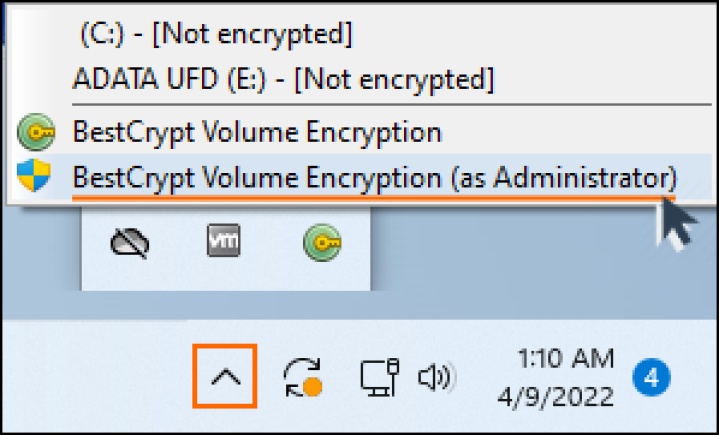
Step 2: Removable Drive Selection
To get working quickly and activate your encryption in just a few clicks, use the 'Simple Interface'. When you install BestCrypt, you can select 'Simple Interface' as the default mode. If the program ever opens in 'Advanced Mode', click the 'Application' menu item and select 'Switch to simple mode'.
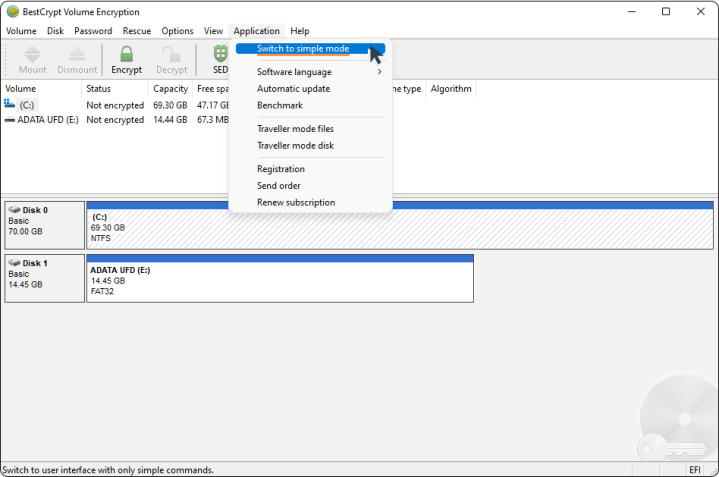
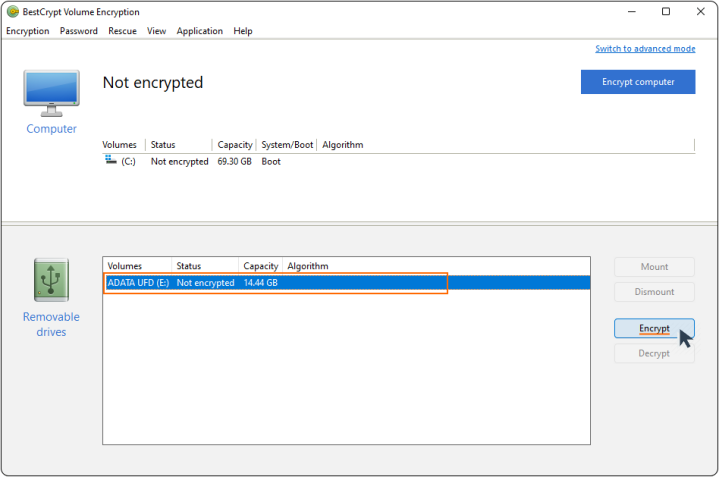
Step 3: Create Encryption Password
It’s time to create a password for your external hard drive. Every time you access your encrypted volume, this password will be requested. Be sure you don’t forget it! What makes a strong and memorable password? We offer tips here.
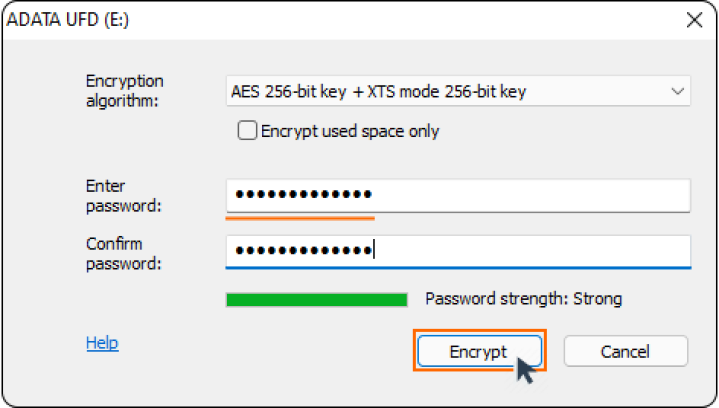
Step 4: Encryption Process
Now you can sit back and enjoy the show!
Once the encryption process begins, you will see a progress status window showing remaining time and percentage completed. At any time, you can click 'Stop' and continue again later.
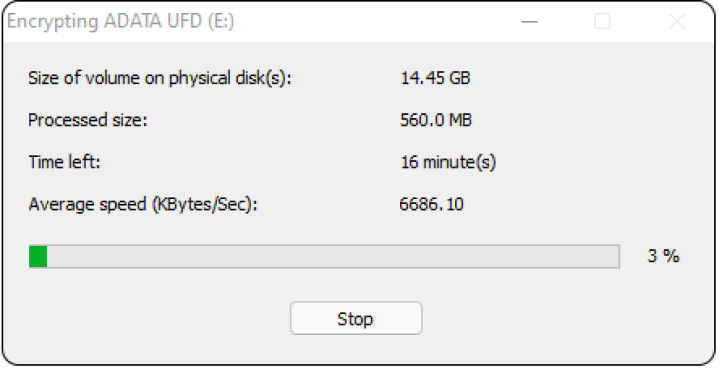
When completed, you will see this prompt: 'The encryption process has finished successfully.'
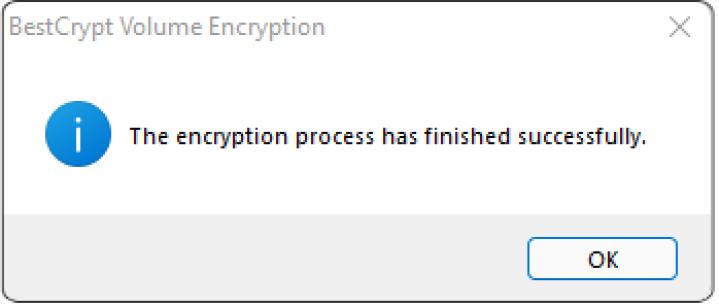
If you see anything other than the success message, please contact Jetico Technical Support.
Step 5: Save rescue file
Upon completion of the encryption process (unless stopped in the middle), BestCrypt Volume Encryption will automatically save the rescue file to provide you with access to your sensitive data in case of an emergency.
Step 1: Launch the Application
If you didn’t install the software yet, download BestCrypt now for free. Once BestCrypt is installed…


Step 2: Removable Drive Selection
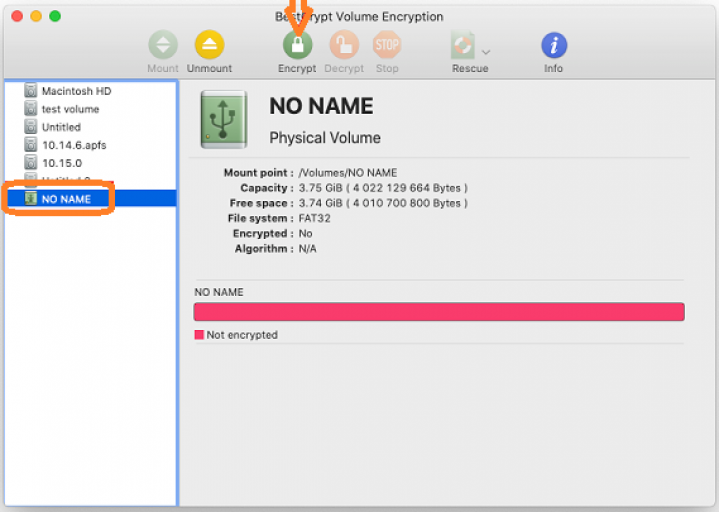
Step 3: Create Encryption Password
It’s time to create a password for your external hard drive. Every time you access your encrypted volume, this password will be requested. Be sure you don’t forget it! What makes a strong and memorable password? We offer tips here.
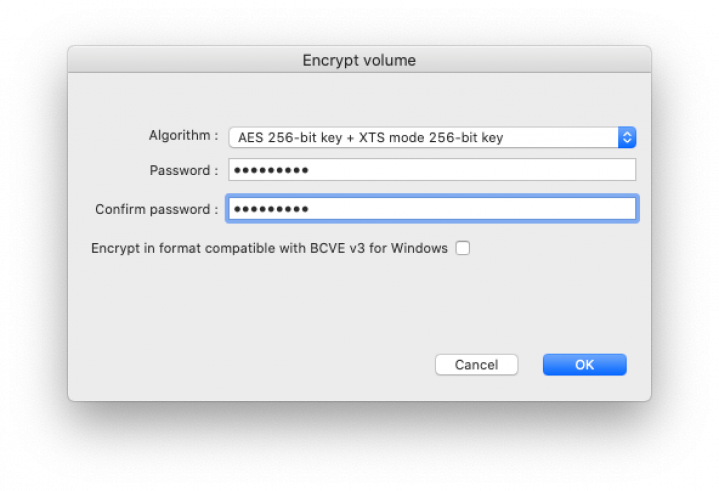
Step 4: Encryption Process
Now you can sit back and enjoy the show!
Once the encryption process begins, you will see a progress status window showing remaining time and percent completed. At any time, you can click 'Stop' and continue again later.
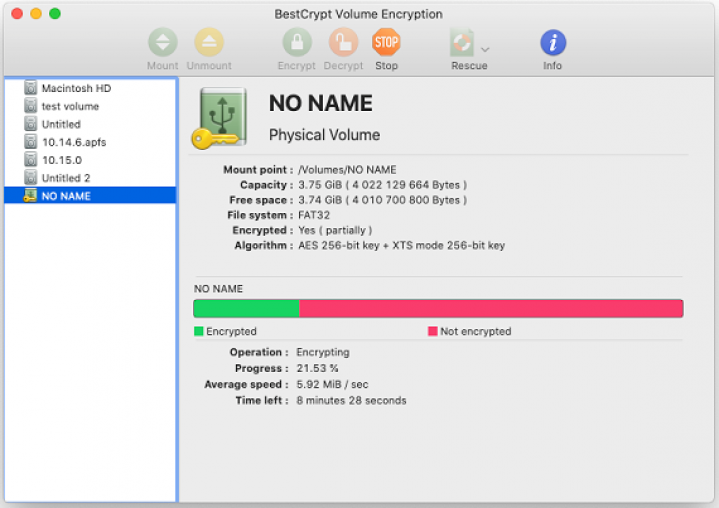
Step 5: Unmount Volume
Upon completion of the encryption process, before ejecting the external drive, it is recommended to unmount the volume by clicking 'Unmount'.
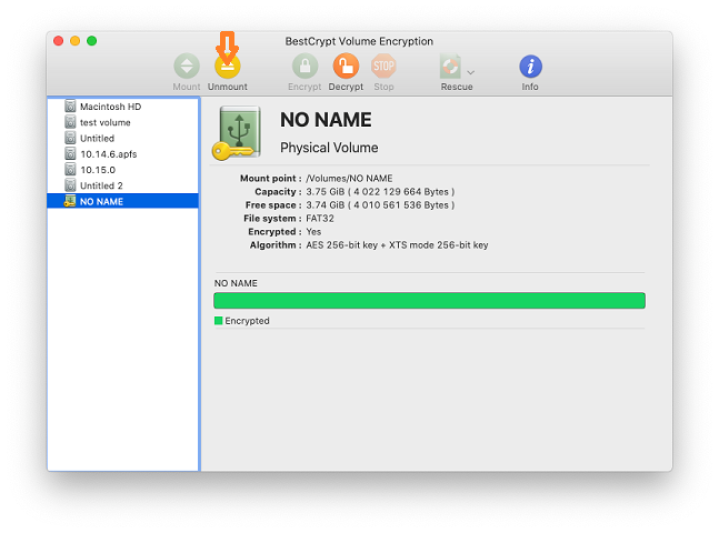
A soon as you unmount the volume, your encryption password will be required to access the data.
Happy Encrypting!
Related Articles
How to Encrypt Your Computer
How to Encrypt Files on Windows 11
How to Take Back Your Privacy in the Cloud with File Encryption Software

Jetico Technical Support helps customers find answers...
- Access our knowledge base articles
- Watch our How-To videos
- Contact us for insights
